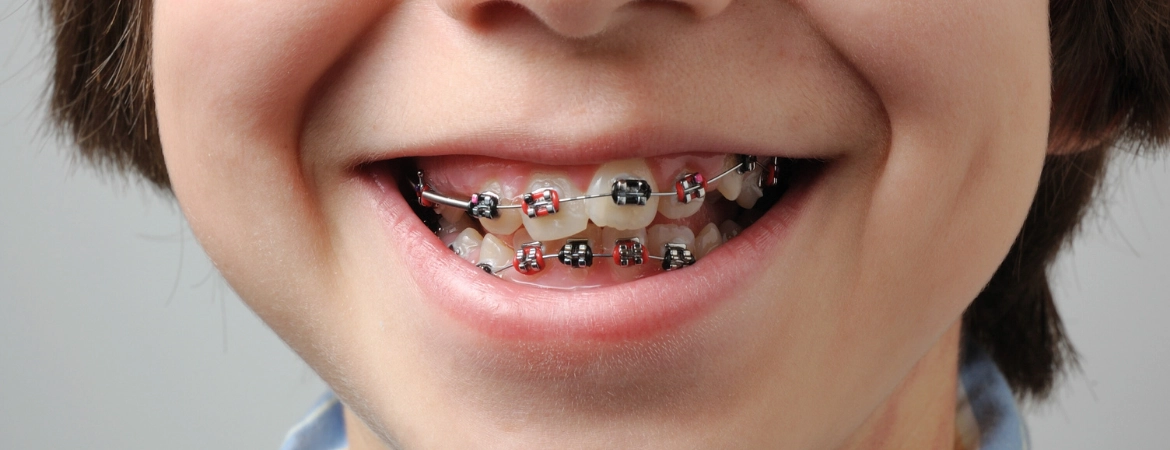
Fixing crooked teeth isn’t just about improving your smile; it’s about boosting your overall oral health and confidence. Whether you’re dealing with minor misalignment or more severe orthodontic issues, there are plenty of options available to help you achieve a straighter, healthier set of teeth. In this blog, we’ll dive into the causes of uneven teeth, the most effective treatments, and what you can expect from your journey toward a better smile. If you’ve ever wondered how to address misaligned teeth, this guide is for you.
Table of Contents
ToggleWhat Causes Crooked Teeth?
Crooked teeth can develop for a variety of reasons, often starting from a young age. Genetics play a significant role, with some people inheriting a smaller jaw or larger teeth that lead to overcrowding and misalignment. Other factors, such as thumb-sucking during childhood, prolonged use of a pacifier, or even mouth breathing, can impact how teeth grow. Poor dental hygiene or early loss of baby teeth can also cause surrounding teeth to shift into empty spaces, creating misalignment. Regardless of the cause, it can often be effectively treated with dental braces treatment, which remains a popular and reliable method for straightening teeth.
Why Should You Fix Crooked Teeth?

While having straight teeth can certainly enhance your appearance, fixing uneven teeth is about much more than just aesthetics. Misaligned teeth can lead to a range of oral health problems if left untreated. Crowded or overlapping teeth are harder to clean, increasing the risk of plaque buildup, tooth decay, and gum disease. Uneven teeth can also cause strain on your jaw and lead to discomfort or even speech difficulties. Addressing uneven teeth with proper dental care can prevent these issues while ensuring a healthier, more comfortable smile.
Popular Treatment Options
When it comes to correcting uneven teeth, there are several popular treatment options available. For all levels of misalignment, traditional metal braces remain widely used and highly effective. For those who prefer a more discreet option, clear aligners like Invisalign have become increasingly popular.The placement of lingual braces on the back of the teeth and the use of tooth-colored ceramic braces provide more aesthetically pleasing alternatives. The right treatment depends on the complexity of your case, your lifestyle, and your personal preferences.
Braces vs. Aligners: Which Is Right for You?

Choosing between braces and aligners can be a tough decision. Traditional braces are often recommended for more complex cases, as they offer the strength needed to correct severe alignment issues. On the other hand, clear aligners like Invisalign are a more flexible and less noticeable option, perfect for those with milder alignment concerns who value convenience. Consulting with an experienced professional at a dental clinic in Turkey, where top-quality and cost-effective treatments are available, can help you determine which method is best suited to your needs.
How Long Does It Take to Fix Crooked Teeth?
The duration of orthodontic treatment depends largely on the severity of the misalignment and the type of treatment you choose. On average, traditional braces take anywhere from 18 months to 3 years to fully correct it. Clear aligners, depending on the complexity, may take a little less time, with many patients completing their treatment within 12 to 18 months. It’s important to have realistic expectations and understand that orthodontic treatments take time to produce lasting results.
Cost of Treatment
The cost of fixing uneven teeth varies depending on the type of treatment you choose and the complexity of your case. Traditional metal braces tend to be more affordable, with costs ranging between $3,000 and $7,000, while clear aligners like Invisalign can cost between $4,000 and $8,000. Other factors that may affect the cost include the location of the clinic, the length of treatment, and whether any additional procedures are required. Always consult with a specialist to get an accurate estimate of what your treatment will entail.
What to Expect During Orthodontic Treatment

Orthodontic treatment, whether with braces or aligners, typically involves regular visits to your orthodontist to ensure that everything is progressing as planned. If you’re wearing braces, you can expect periodic adjustments to ensure the wires are applying the correct pressure on your teeth. For those using clear aligners, you’ll receive new aligners every few weeks as your teeth gradually move into place. Some discomfort is normal, particularly after adjustments or when switching to a new aligner tray, but this usually subsides within a few days.
Maintaining Straight Teeth After Treatment
Once your treatment is complete, the journey isn’t over. Your dentist will likely fit you with a retainer to maintain your newly straightened teeth. Retainers are crucial for preventing your teeth from shifting back to their original positions. Depending on your orthodontist’s recommendation, you may need to wear your retainer full-time for a while, eventually transitioning to nighttime wear. Maintaining excellent oral hygiene and attending regular dental checkups are also key to ensuring your smile stays straight and healthy long-term.
Is It Ever Too Late to Fix Crooked Teeth?
It’s never too late to fix crooked teeth! While many people undergo orthodontic treatment during their teenage years, more and more adults are seeking treatments to straighten their teeth. With advances in orthodontic technology, treatment options have become more comfortable and less noticeable, making it easier for adults to get the smile they want without feeling self-conscious. Whether you’re in your 20s or 50s, you can still achieve straighter teeth and enjoy the benefits of improved oral health and confidence.



